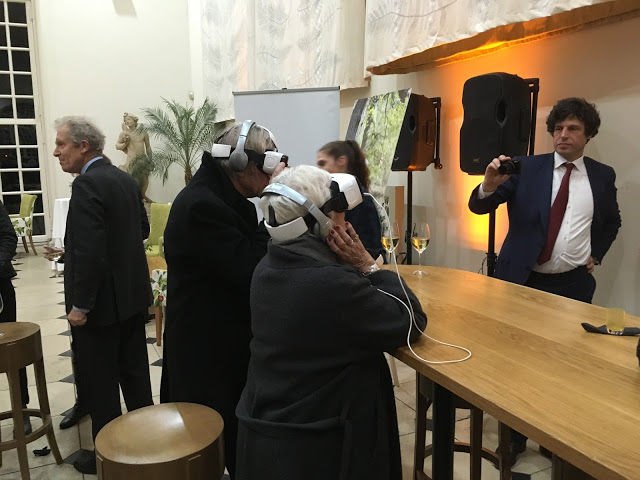In the center of a garden woodland in Surrey, southeast England, there is a magnificent 200 year old oak tree. Dating as far back as the battle of Waterloo, the tree has survived both World Wars, avoiding much sustained bombing of British cities and the countryside. In addition to its size and survival, the tree is significant as part of a woodland curated by Dame Judi Dench, one of the nation’s best loved actors.
In a new documentary for the BBC, Judi Dench: My Passion For Trees, Dame Judi investigates the life and roots of the 200 year-old oak tree with the co-operation of the National Centre for Earth Observation (NCEO), and researchers at University College London (UCL). Using the latest 3D LiDAR scanning technology and virtual reality (VR) the documentary discovers how one tree fits into the bigger picture of the global climate.

Bouncing lasers
Accompanying Dame Judi in the show are Dr. Phil Wilkes and Dr. Mat Disney of UCL’s Department of Geography. Using terrestrial LiDAR (Light Detection and Ranging) 3D scanners, the same kind of technology used to train self-driving vehicles, Disney and Wilkes perform a survey of Dench’s tree.
As a method of remote sensing, LiDAR works by bouncing a pulsed laser off of solid objects in the environment. A 3D image of the solid objects is built up by measurements of the light feedback received by the LiDAR module.
The LiDAR system in this case created a 3D digital representation of all the branches and leaves of the old oak tree. Based on the data collected, Wilkes and Disney estimates that the tree holds around 260 thousand leaves, and stretches 12 km of branches, making a combined weight of around 25 tons.
By applying the survey to satellite observation of atmospheric carbon dioxide dynamics, in an ongoing project with NCEO, the European Space Agency and NASA, Disney can identify how this single tree fits within the world’s oxygen supply.
The UCL team also reveal details of an underground root network that allows trees to transfer nutrients and supporting each other’s growth. An impressive feat of nature, the mycorrhiza network, also known as the Wood Wide Web, can connect around 95% of plant families through the common dependence upon mycelium fungus – a material also to make organic furniture with the help of 3D printing.
Many of the other trees in Dench’s woodland were planted as part of a tradition to remember lost friends and family members. In an interview for The Daily Telegraph Dench comments, “”I’ve even turned my six acre garden into a secret woodland, and I see my trees as my extended family,”
“My life now is just trees. Trees and champagne.”
Judi Dench: My Passion For Trees will be on BBC 1, December 20th at 8pm.
Don’t forget to nominate in the the second annual 3D Printing Industry Awards now.
Never miss another story – subscribe to the free 3D Printing Industry newsletter, follow us on Twitter, and like us on Facebook.
Featured image shows Dame Judi Dench listening to water rising through the bark of an oak tree in Judi Dench: My Passion for Trees on BBC One Photo by Gary Moyes



